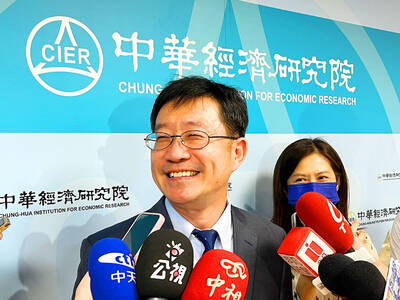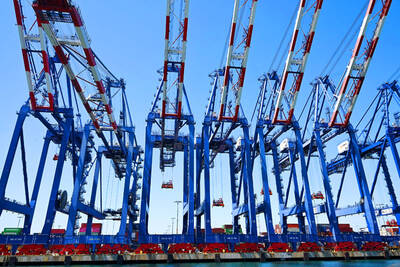World steel demand is expected to grow strongly this year, despite concerns about the performance of the US and EU economies, according to the industry’s world body.
Demand from the “BRIC” countries Brazil, Russia, India and China and other emerging economies will push demand up to almost 1.3 billion tonnes, a rise of 6.7 percent over last year, the International Iron and Steel Institute (IISI) said in its latest forecast.
Growth next year is likely to rise by about 6.3 percent, according to the institute, which represents 180 steel makers across the world.
Ku-Taek Lee, the IISI chairman, said: “The underlying assumption behind this forecast is that, although some weakening in the US and EU economies is expected, demand for steel will remain healthy thanks in part to the emerging markets, which will maintain their dynamism.”
The buoyant outlook from the IISI contrasted with a more sombre approach from investors in the Far East. Shares in several of the region’s steel makers fell on Monday after Posco of South Korea, the world’s fourth largest producer, said it was not planning to raise prices unless raw material costs soared.
The institute said it expected demand from the Bric countries to rise by just over 11 percent this year, and by 10.3 percent next year, but rising demand in other emerging economies would narrow the gap in growth rates between the Bric countries and the rest of the world.
Apparent steel use, which includes inventories, is expected to rise by 11.5 percent in China, taking its share of world steel consumption to 35 percent this year.
Luo Bingsheng, deputy chairman of China Iron & Steel Association, last week said that China’s crude steel output was estimated to reach up to 540 tonnes this year, an increase of about 50 tonnes on last year.
Luo also predicted that the domestic “apparent consumption” of crude steel was likely to grow about 11 percent, slightly lower than the 11.87 percent last year.
In the EU, steel use is expected to rise by 1.6 percent this year and 2.3 percent next year. Consumption in the North American Free Trade Agreement countries — the US, Canada and Mexico — fell sharply last year, but the IISI said it expected steel consumption to grow by 1.9 — this year and 1 — next year despite the economic uncertainties.
The world steel industry has boomed in recent years on the back of growing demand from industrializing nations. It is the second biggest industry, after oil, in terms of commodities.
The boom has driven up the price of steel, and the prices of iron ore and nickel, used in the manufacture of stainless steel, have also increased.

IN THE AIR: While most companies said they were committed to North American operations, some added that production and costs would depend on the outcome of a US trade probe Leading local contract electronics makers Wistron Corp (緯創), Quanta Computer Inc (廣達), Inventec Corp (英業達) and Compal Electronics Inc (仁寶) are to maintain their North American expansion plans, despite Washington’s 20 percent tariff on Taiwanese goods. Wistron said it has long maintained a presence in the US, while distributing production across Taiwan, North America, Southeast Asia and Europe. The company is in talks with customers to align capacity with their site preferences, a company official told the Taipei Times by telephone on Friday. The company is still in talks with clients over who would bear the tariff costs, with the outcome pending further

WEAKER ACTIVITY: The sharpest deterioration was seen in the electronics and optical components sector, with the production index falling 13.2 points to 44.5 Taiwan’s manufacturing sector last month contracted for a second consecutive month, with the purchasing managers’ index (PMI) slipping to 48, reflecting ongoing caution over trade uncertainties, the Chung-Hua Institution for Economic Research (CIER, 中華經濟研究院) said yesterday. The decline reflects growing caution among companies amid uncertainty surrounding US tariffs, semiconductor duties and automotive import levies, and it is also likely linked to fading front-loading activity, CIER president Lien Hsien-ming (連賢明) said. “Some clients have started shifting orders to Southeast Asian countries where tariff regimes are already clear,” Lien told a news conference. Firms across the supply chain are also lowering stock levels to mitigate

NEGOTIATIONS: Semiconductors play an outsized role in Taiwan’s industrial and economic development and are a major driver of the Taiwan-US trade imbalance With US President Donald Trump threatening to impose tariffs on semiconductors, Taiwan is expected to face a significant challenge, as information and communications technology (ICT) products account for more than 70 percent of its exports to the US, Chung-Hua Institution for Economic Research (CIER, 中華經濟研究院) president Lien Hsien-ming (連賢明) said on Friday. Compared with other countries, semiconductors play a disproportionately large role in Taiwan’s industrial and economic development, Lien said. As the sixth-largest contributor to the US trade deficit, Taiwan recorded a US$73.9 billion trade surplus with the US last year — up from US$47.8 billion in 2023 — driven by strong

RESHAPING COMMERCE: Major industrialized economies accepted 15 percent duties on their products, while charges on items from Mexico, Canada and China are even bigger US President Donald Trump has unveiled a slew of new tariffs that boosted the average US rate on goods from across the world, forging ahead with his turbulent effort to reshape international commerce. The baseline rates for many trading partners remain unchanged at 10 percent from the duties Trump imposed in April, easing the worst fears of investors after the president had previously said they could double. Yet his move to raise tariffs on some Canadian goods to 35 percent threatens to inject fresh tensions into an already strained relationship, while nations such as Switzerland and New Zealand also saw increased